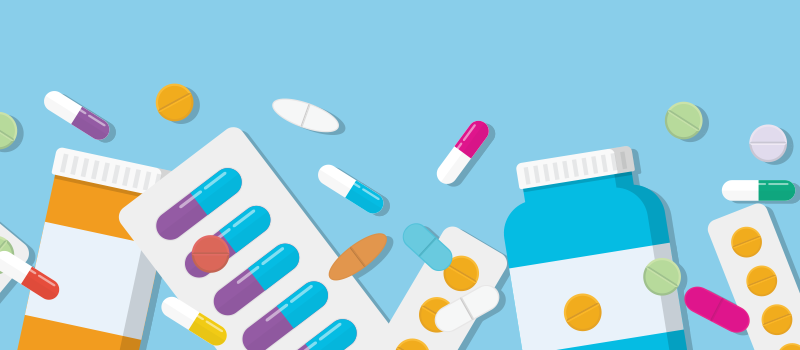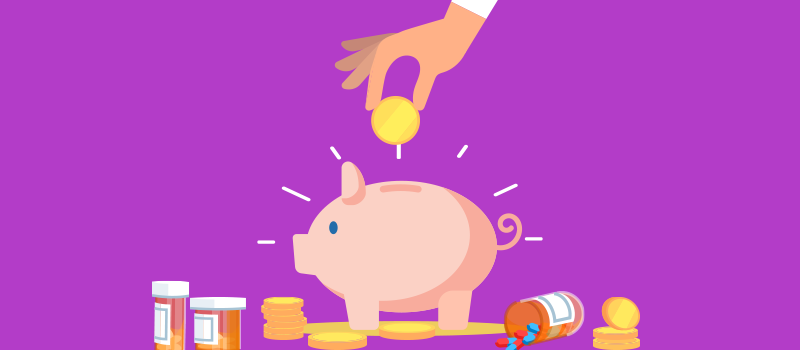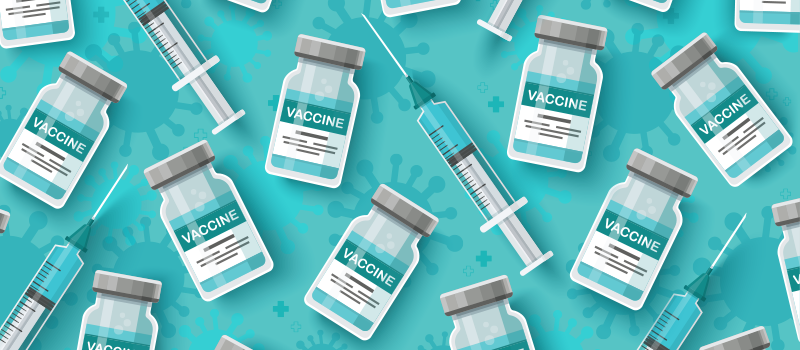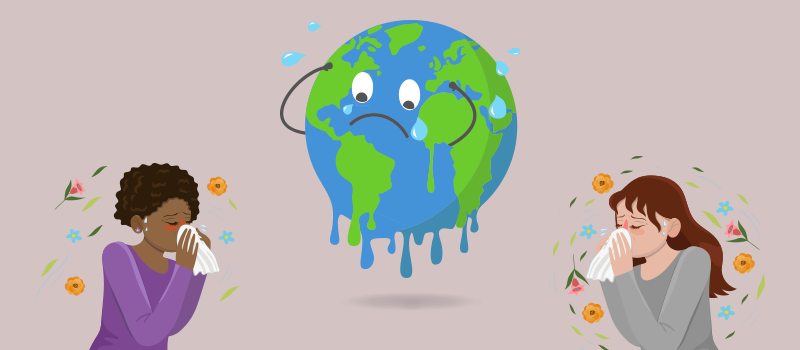What’s the Buzz
The Bee Healthy Blog
Benadryl Best Practices

The brand name Benadryl contains the generic medication diphenhydramine. It is an over-the-counter antihistamine that is available in different forms like tablets, chewable tablets, liquid-filled capsules (liqui gels), oral solutions, and topical products, such as itch relief creams and sprays.
This dosing guide will help you understand how much Benadryl you can safely take to avoid severe side effects. In general, you should take the lowest effective dose for the shortest possible time. Taking Benadryl long-term has been linked to an increased risk of memory problems and dementia. If you are taking other medications or have certain health issues, you should talk to a healthcare professional to ensure that Benadryl is safe for you and there are no drug interactions with other medications.
What medical conditions is Benadryl used to treat?
Benadryl works by blocking histamine, a natural substance in the body. Histamine is responsible for allergy symptoms. Therefore, by blocking histamine, Benadryl can help relieve symptoms of seasonal allergies, hay fever, allergic rhinitis, and the common cold, such as runny nose, sneezing, post-nasal drip, and red, watery, and itchy eyes. This antihistamine effect also makes Benadryl useful for treating itchy skin caused by allergic reactions and insect bites. Last but not least, as this is one of the most common uses of Benadryl, due to the sedating nature of Benadryl, this medication is often used to help with insomnia (trouble falling asleep) and motion sickness.
Diphenhydramine is a common ingredient of many OTC colds and flu products containing other drugs like decongestants and cough suppressants. With more than one ingredient, these OTC colds and flu medications are considered multi-symptom products as they provide relief for sinus pressure, nasal congestion (stuffy nose), runny nose, and sneezing.
What are the side effects of taking too much Benadryl?
Taking too much Benadryl or taking it with other antihistamines can result in severe side effects and drug interactions. Side effects can include excessive sleepiness, confusion, difficulty concentrating, memory problems, dry eyes, dry mouth, and a fast heartbeat.
Like with all over-the-counter medications, it is important to take only the recommended dosage of Benadryl. Taking more than the maximum dose of oral Benadryl can result in serious side effects.
It is also worth remembering that many over-the-counter cold and allergy remedies contain the same active ingredient. You should read the package label carefully to ensure you are not taking more than one product containing diphenhydramine.
What is the recommended dose of Benadryl?
The recommended doses of Benadryl vary according to how much active ingredient (diphenhydramine) is present in a specific product. Keep in mind that Benadryl dosing depends on the following factors:
- The indication — what condition are you treating?
- The age — Benadryl is considered unsafe for children under 2 years
- The dosage forms — Benadryl products have a wide variety of dosage forms such as capsules, tablets, and oral solution. Therefore, it is important to know how much Benadryl you get in a dose. For example, the standard concentration of children's Benadryl oral liquid is 12.5 mg per 5 mL; This means every 5 milliliters (mL) of the oral liquid, you will get 12.5 milligrams (mg) of diphenhydramine.
Below is a brief dosing guide for Benadryl use.
Benadryl Allergy Extra Strength
This formulation contains 50 mg of diphenhydramine per tablet. Adults and children over 12 can take 1-2 tablets every 4 to 6 hours. Do not take more than 6 doses in 24 hours. This product is not for children younger than 12 years.
Benadryl Allergy Ultratab and Benadryl Allergy Liqui Gels
These formulations contain 25 mg of diphenhydramine per tablet or capsule. Adults and children over 12 can take 1-2 tablets every 4 to 6 hours. Children between 6 and 12 years of age can take 1 tablet every 4 to 6 hours. Do not take more than 6 doses in 24 hours. These products are not for children younger than 6 years.
Topical Benadryl Products
Topical products like Original Benadryl Itch Stopping Cream or Benadryl Extra Strength Spray for bug bites should be used no more than 3-4 times a day on the affected area. These topical products are suitable for adults and children 2 years of age and older.
Can you take 100 mg of Benadryl?
Yes, you can take 100 mg of Benadryl. The maximum daily dose of oral Benadryl is 300 mg for adults and children 12 years and older. The maximum daily dose for children between 6 and 12 years old is 150 mg.
Can I take 2 Benadryl a day?
Yes, you can take 2 Benadryl a day. Most adult formulations contain 25 mg to 50 mg of diphenhydramine hydrochloride (the main ingredient in Benadryl). You can take 1-2 tablets every 4 to 6 hours as long as it does not exceed 6 doses of Benadryl in a 24-hour period.
How many chewable tablets of Benadryl can you take in a day?
Children’s Benadryl Chewables contain 12.5 mg of diphenhydramine. People over the age of 12 years can take 2-4 chewable tablets (25 mg to 50 mg) every 4 to 6 hours. Children between 6 and 11 years old can take 1-2 chewable tablets (12.5 mg to 25 mg) every 4 to 6 hours. Children between 2 and 5 years old should take oral Benadryl chewables as directed by their doctor. Benadryl is not for children younger than 2 years old.
How many Benadryl can you take at once?
Adults can take up to 100 mg or 1-2 tablets of Benadryl at once. However, you should try to take the lowest possible dose for the shortest possible time to treat your symptoms.
How much is too much Benadryl in a day?
More than 300 mg in a day is too much Benadryl for adults. Keep in mind that children need to take lower doses, and you should always talk to a doctor before giving Benadryl to a child.
What are the symptoms of a Benadryl overdose?
A Benadryl overdose can cause signs and symptoms like confusion, urinary retention (decreased urination), fast heartbeat, low blood pressure, dry mouth, blurred vision, irritability, hallucinations, and changes in electrocardiogram readings. These signs and symptoms are dose-dependent and will be more severe with larger doses. Very large doses of more than 1 gram of diphenhydramine can lead to delirium, seizures, coma, and even death. If you or a loved one has taken too much Benadryl, go to the nearest emergency room for immediate medical care.
Wrapping up
It’s important to carefully read the package instructions on all over-the-counter medications to avoid serious side effects. Benadryl is easily available without a prescription and is widely used to relieve symptoms of common illnesses like allergic rhinitis, the common cold, and motion sickness.
However, taking more than the recommended dose of Benadryl can result in serious health complications. Remember, many other medications contain diphenhydramine. Knowing which medications contain diphenhydramine is important so that you won’t take more than the recommended dose of Benadryl.
Also, keep in mind that some products may contain other ingredients in addition to diphenhydramine which can make side effects worse. If you have any known drug allergies, talk to your doctor or pharmacist about which Benadryl product is safe for you.
Remember that alcohol and some drugs used to treat certain medical conditions can interact with Benadryl. Certain combinations of medications can result in severe side effects due to drug interactions. Always check with your healthcare professional before taking Benadryl if you are on other medications.
References:












SOCIAL